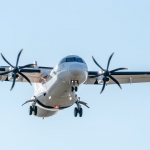The 2012 Honda Pilot manual is a comprehensive guide covering operation, maintenance, troubleshooting, and warranty info, ensuring optimal performance and longevity for your vehicle.
Overview of the 2012 Honda Pilot
The 2012 Honda Pilot is a mid-size SUV offering a versatile blend of comfort, reliability, and performance. It features a 4-door design with seating for up to eight passengers, making it ideal for families; Equipped with a 3.5L V6 engine and available all-wheel drive, the Pilot delivers smooth handling and robust towing capacity. Its exterior combines ruggedness with modern styling, while the interior provides ample cargo space and advanced convenience features. The manual ensures owners maximize its potential through proper maintenance and operation.
Importance of the Owner’s Manual
The owner’s manual is a vital resource for 2012 Honda Pilot owners, providing essential information on operation, maintenance, and troubleshooting. It ensures safe and efficient use of the vehicle, highlighting proper driving techniques, maintenance schedules, and warranty details. By following the manual, owners can optimize performance, prevent mechanical issues, and extend the lifespan of their SUV. It serves as a comprehensive guide to unlocking the full potential of the Honda Pilot while maintaining reliability and safety on the road.

Key Features of the 2012 Honda Pilot
The 2012 Honda Pilot features a 3.5L V6 engine, 5-speed automatic transmission, up to 87.0 cubic feet of cargo space, seating for 8, and advanced technology.
Exterior Design and Dimensions
The 2012 Honda Pilot features a robust SUV design with a length of 191.4 inches, width of 78.5 inches, and height of 72.7 inches. Its wheelbase is 109.2 inches, providing stability. Ground clearance is 7.0 inches for off-road capability. Curb weight ranges from 4,255 to 4,383 lbs. The exterior includes a chrome grille, halogen headlights, and 17-inch alloy wheels. The Pilot offers seating for up to 8 passengers and cargo space of 16.5 cubic feet behind the third row, expanding to 87.0 cubic feet with seats folded.
Interior Comfort and Technology
The 2012 Honda Pilot offers a spacious interior with premium cloth or leather upholstery options. It features a tri-zone automatic climate control system for optimal comfort. The dashboard includes a 6.5-inch touchscreen display for navigation and rearview camera. A 7-speaker audio system with USB and auxiliary inputs enhances entertainment. The Pilot also includes steering wheel-mounted controls, cruise control, and power windows. Optional upgrades like a moonroof and heated seats add to the vehicle’s comfort and convenience.
Engine and Performance Specifications
The 2012 Honda Pilot is equipped with a 3.5-liter V6 engine featuring Variable Cylinder Management™ (VCM®) technology. It delivers 250 horsepower and 253 lb-ft of torque. The engine is paired with a 5-speed automatic transmission. Front-wheel drive (FWD) is standard, while all-wheel drive (AWD) is optional. The Pilot achieves an EPA-estimated 17 MPG city and 24 MPG highway; With proper towing equipment, it can tow up to 4,500 pounds. The manual provides detailed specs and maintenance tips to optimize performance and efficiency.

Maintenance and Service Schedule
Regular maintenance is essential for optimal performance. The 2012 Honda Pilot manual recommends oil changes every 5,000 miles and tire rotations every 8,000 miles. Coolant replacement is required at 200,000 miles, and spark plugs should be inspected during every service interval. Adhering to these schedules ensures longevity and prevents mechanical issues.
Recommended Maintenance Intervals
Regular maintenance is crucial for the 2012 Honda Pilot. Oil changes are due every 5,000 miles, while tire rotations should occur every 8,000 miles. The coolant should be replaced at 200,000 miles, with 9 liters needed. Spark plugs require inspection during each service. Proper adherence ensures longevity and prevents issues. Follow these intervals to maintain performance and reliability, as outlined in the manual.
Oil Change and Fluid Requirements
The 2012 Honda Pilot requires regular oil changes every 5,000 miles using 5W-20 viscosity oil, with a capacity of approximately 4.5 quarts. Coolant, transmission, and brake fluids should be inspected every 12,000 miles. Proper fluid levels ensure optimal performance and longevity. Always refer to the manual for specific guidelines to avoid damage and maintain warranty compliance.
Tire Pressure and Rotation Guidelines
The 2012 Honda Pilot requires tire pressure of 32-36 PSI, depending on load and driving conditions. Tires should be rotated every 5,000 to 8,000 miles for even wear. Proper inflation improves fuel efficiency and handling, while regular rotations extend tire life. Always check pressure when tires are cold and refer to the manual for specific guidelines. Neglecting these practices may lead to uneven wear or reduced performance.

Troubleshooting Common Issues
The 2012 Honda Pilot manual helps identify common issues like warning lights or performance problems. It guides owners through basic checks and troubleshooting steps.
Diagnosing Mechanical Problems
The 2012 Honda Pilot manual outlines steps to identify mechanical issues. Common problems include timing belt wear and coolant leaks. Regular checks of belts, hoses, and fluids are essential. The manual advises inspecting the water pump and spark plugs during routine maintenance. Error codes can signal specific issues, guiding owners to solutions. Consulting the manual ensures accurate diagnoses, preventing minor problems from becoming major repairs and maintaining the vehicle’s reliability.
Electrical System Faults and Solutions
The 2012 Honda Pilot manual details diagnosing electrical faults, such as faulty sensors or wiring issues. Resetting the navigation system or addressing error codes is covered. Solutions include checking fuses, connectors, and battery connections. Proper tools and procedures ensure repairs are safe and effective, preventing system malfunctions. Regular inspections of wiring and connections help maintain electrical reliability, as outlined in the manual.
Common Error Codes and Their Meanings
The 2012 Honda Pilot manual lists common error codes like P0300-P0304, indicating engine misfires, and P0171/P0174, related to fuel system issues. These codes help identify problems such as faulty oxygen sensors, ignition coils, or vacuum leaks. The manual advises checking the cooling system, spark plugs, and fuel cap for loose connections. Regular inspections and addressing these codes promptly ensure proper vehicle function and prevent further damage, as detailed in the troubleshooting section.

Performance Optimization Tips
Regular maintenance, smooth acceleration, and consistent speeds enhance fuel efficiency and overall performance. Check tire pressure, spark plugs, and air filters for optimal engine function.
Driving Techniques for Better Fuel Efficiency
For optimal fuel efficiency in your 2012 Honda Pilot, adopt smooth acceleration and braking habits. Maintain consistent speeds, especially on highways, using cruise control when possible. Regularly check tire pressure and ensure proper inflation, as under-inflated tires reduce mileage. Avoid excessive idling and remove unnecessary weight from the vehicle. Additionally, keep spark plugs clean and ensure the air filter is in good condition to enhance engine performance and fuel economy.
Customization and Aftermarket Modifications
Customizing your 2012 Honda Pilot can enhance its functionality and style. Honda-approved accessories, such as roof racks and cargo organizers, offer practical upgrades. Aftermarket modifications like performance air filters or exhaust systems can improve engine efficiency. Ensure all modifications comply with Honda’s guidelines to maintain warranty coverage and safety standards. Upgrading suspension or braking systems should be done by professionals to preserve vehicle integrity and performance.
Upgrading Suspension and Braking Systems
Upgrading the suspension and braking systems of your 2012 Honda Pilot can enhance handling and safety. Consider installing high-performance shocks or coilovers for improved stability. Brake upgrades, such as larger rotors or high-friction pads, can significantly improve stopping power. Always use Honda-approved or compatible aftermarket parts to ensure reliability. Proper installation by a certified mechanic is crucial to maintain safety and performance standards. Regularly inspect and maintain these systems to ensure optimal functionality and longevity of your vehicle.

Safety Features and Guidelines
The 2012 Honda Pilot is equipped with advanced safety features, including airbags, ABS, and VSA, designed to protect occupants and prevent accidents. Adhere to guidelines for optimal safety.
Passive Safety Systems (Airbags, Seatbelts)
The 2012 Honda Pilot features a comprehensive suite of passive safety systems, including multiple airbags strategically placed throughout the cabin to protect occupants during collisions. The vehicle is equipped with dual-stage front airbags, side airbags, and side curtain airbags for enhanced protection. Additionally, three-point seatbelts with pretensioners ensure passengers are securely restrained, minimizing injury risk. Proper use and regular inspection of these systems are crucial for maximizing safety. Always follow the manual’s guidelines for optimal protection.
Active Safety Features (ABS, VSA)
The 2012 Honda Pilot is equipped with advanced active safety features, including Anti-lock Braking System (ABS) and Vehicle Stability Assist (VSA). ABS prevents wheel lock-up during hard braking, ensuring control and stability. VSA enhances traction and stability by adjusting engine power and braking to improve handling, especially in slippery conditions. These systems work together to provide superior safety and control, helping drivers avoid accidents and maintain confidence on the road. Proper functionality of these features is critical for optimal safety performance.
Emergency Procedures and Precautions
The 2012 Honda Pilot manual outlines essential emergency procedures, such as handling breakdowns, towing guidelines, and what to do in case of an accident. Regular checks of critical systems, like the cooling system and timing belt, are emphasized to prevent failures. In case of an emergency, drivers are advised to move to a safe location and follow proper safety protocols. Adhering to these guidelines ensures safety and minimizes potential risks while driving or addressing unexpected issues. Always refer to the manual for detailed instructions.
Technical Specifications
The 2012 Honda Pilot features a 3.5-liter V6 engine, 5-speed automatic transmission, and available all-wheel drive. It offers a towing capacity of up to 4,500 lbs. Refer to the manual for detailed specs.
Engine and Transmission Details
The 2012 Honda Pilot is equipped with a 3.5-liter V6 engine, delivering 250 horsepower at 5,700 rpm and 253 lb-ft of torque at 4,800 rpm. The engine features Variable Cylinder Management (VCM) for improved fuel efficiency. Paired with a 5-speed automatic transmission, it offers smooth gear shifts and optimal power delivery. Both front-wheel drive (FWD) and all-wheel drive (AWD) configurations are available, enhancing traction and control on various road conditions. The transmission includes a lock-up torque converter for better efficiency, ensuring responsive acceleration and seamless performance across driving scenarios.
Chassis and Suspension Overview
The 2012 Honda Pilot features a robust chassis designed for durability and responsiveness. Its suspension system includes a MacPherson strut front setup and a multi-link rear configuration, providing a smooth ride and stable handling. The chassis is constructed with high-strength steel, enhancing rigidity while maintaining a comfortable driving experience. This combination ensures optimal balance between on-road refinement and off-road capability, making the Pilot versatile for various driving conditions. The suspension is tuned to minimize body roll and improve traction, delivering a confident and controlled ride.
Weight and Towing Capacity
The 2012 Honda Pilot has a curb weight ranging from approximately 4,300 to 4,600 pounds, depending on the trim and configuration. It offers a maximum towing capacity of up to 4,500 pounds when properly equipped with the optional towing package. The weight distribution is balanced, with about 60% of the weight over the front axle and 40% over the rear, ensuring stability and control. This capability makes the Pilot suitable for hauling trailers or boats, while maintaining its refined on-road manners and versatility for family use.

Accessories and Customization Options
The 2012 Honda Pilot offers a variety of accessories for interior and exterior enhancements, allowing owners to personalize their vehicle to suit their preferences and needs effectively.
Honda-Approved Accessories
Honda offers a range of approved accessories for the 2012 Pilot, including roof racks, cargo organizers, and seat covers. These accessories are designed to perfectly fit your vehicle, enhancing functionality and style while maintaining Honda’s quality standards. Accessories are rigorously tested for compatibility and durability, ensuring a seamless integration with your Pilot. Explore the full catalog to personalize your SUV according to your lifestyle and preferences, all while maintaining the reliability and performance you expect from Honda.
Aftermarket Parts and Modifications
Aftermarket parts and modifications can enhance the performance, style, and functionality of your 2012 Honda Pilot. Popular upgrades include suspension enhancements, exhaust systems, and interior accessories. When installing aftermarket components, ensure compatibility with your vehicle’s specifications to maintain safety and performance. Always consult the owner’s manual or a professional mechanic to avoid voiding the warranty or causing system conflicts. Choose reputable brands and follow installation guidelines carefully to preserve your Pilot’s reliability and integrity while achieving the desired customization.
Interior and Exterior Enhancement Ideas
Enhance your 2012 Honda Pilot’s interior with premium seat covers, ambient lighting, or upgraded infotainment systems. For the exterior, consider roof racks, body kits, or custom paint jobs to personalize your vehicle. Use Honda-approved accessories to maintain reliability and warranty coverage. Explore aftermarket options like alloy wheels or spoilers for a sporty look. Ensure all modifications align with the manual’s guidelines to preserve performance and safety, while adding unique style to your Pilot.

Warranty Information
The 2012 Honda Pilot’s warranty includes factory coverage and extended options. Regular maintenance as outlined in the manual is essential for maintaining warranty validity and ensuring compliance;
Factory Warranty Coverage
The 2012 Honda Pilot comes with a factory warranty that includes coverage for parts and labor under specific conditions. The warranty typically lasts for a certain period or mileage, ensuring repair or replacement of defective components. Regular maintenance, as outlined in the manual, is essential to maintain warranty validity. The warranty may also include provisions for transferability to subsequent owners, enhancing the vehicle’s value. Always refer to the manual for detailed terms and conditions of the factory warranty coverage.
Extended Warranty Options
Extended warranty options for the 2012 Honda Pilot provide additional protection beyond the factory warranty period. These plans can be purchased to cover repairs and replacements for parts and labor after the original warranty expires. Offered by Honda and third-party providers, extended warranties vary in coverage and cost. Owners can choose plans that suit their needs, ensuring continued protection for critical vehicle components. Always review the terms and conditions carefully before purchasing an extended warranty for your 2012 Honda Pilot.
Warranty Claims and Service Requirements
Warranty claims for the 2012 Honda Pilot must be submitted through authorized Honda dealerships. Proper documentation, including maintenance records, is required to process claims. Regular servicing, as outlined in the manual, must be completed to maintain warranty validity; Repairs must use genuine Honda parts to ensure compliance. Any deviations from these requirements may result in claim denial. Owners should review the warranty terms carefully to understand coverage and service obligations for their vehicle.

Fuel Efficiency and Economy
The 2012 Honda Pilot manual provides detailed fuel efficiency estimates, including MPG ratings for city and highway driving. It also outlines factors affecting fuel economy, such as driving habits, load, and conditions, offering practical tips to enhance mileage and reduce fuel consumption effectively.
Estimated MPG for City and Highway
The 2012 Honda Pilot manual states the vehicle achieves an estimated 17 MPG in the city and 24 MPG on the highway for front-wheel-drive models. All-wheel-drive versions slightly differ at 16 MPG city and 23 MPG highway. These estimates provide a clear understanding of fuel efficiency under normal driving conditions, helping owners anticipate and manage their fuel costs effectively while ensuring optimal vehicle performance.
Factors Affecting Fuel Efficiency
Several factors influence the 2012 Honda Pilot’s fuel efficiency, including driving habits, maintenance, and vehicle load; Aggressive driving or rapid acceleration can lower MPG, while proper tire pressure and regular air filter maintenance help optimize efficiency. Additionally, carrying excess weight or towing trailers reduces fuel economy. Adhering to the recommended maintenance schedule outlined in the manual ensures the vehicle operates at its best, maximizing fuel efficiency and performance under various conditions.
Manual Transmission vs. Automatic
The 2012 Honda Pilot offers both manual and automatic transmissions, each with unique advantages. Manual transmissions provide better fuel economy and driver control, ideal for those who prefer a more engaging driving experience. Automatic transmissions, while slightly less efficient, offer convenience and ease, especially in stop-and-go traffic. The manual emphasizes proper shifting techniques to maximize performance and efficiency, while automatic models focus on smooth, seamless gear transitions, catering to different driver preferences and needs.

Downloading and Using the Manual
The 2012 Honda Pilot manual is available as a free PDF download from Honda’s official website or platforms like CarManualsOnline.info, ensuring easy access for owners.
How to Download the PDF Manual
To download the 2012 Honda Pilot manual, visit Honda’s official website or trusted platforms like CarManualsOnline.info. Navigate to the “Support” or “Manuals” section, select your vehicle’s model year, and click the PDF link to begin the download. Ensure your device has sufficient storage space for the file, which is approximately 15-17 MB. Once downloaded, you can view, print, or save the manual for future reference. This ensures you have all the necessary information at your fingertips.
Navigating the Manual’s Content
The 2012 Honda Pilot manual is organized into clear sections, starting with an index for quick access to specific topics. Use the table of contents to navigate through chapters on maintenance, troubleshooting, and technical specifications. Digital versions allow keyword searches, while bookmarks and hyperlinks simplify navigation. The manual is divided into logical categories, ensuring users can easily locate information on features, diagnostics, and safety guidelines. This structure makes it user-friendly and efficient for owners to find the details they need quickly and effortlessly.
Printing and Referencing the Manual
The 2012 Honda Pilot manual can be printed for convenient reference, though digital versions are ideal for keyword searches. Print the entire document or specific sections as needed. For easy access, keep a printed copy in your vehicle or workshop. Regularly referencing the manual ensures proper maintenance, troubleshooting, and safety. Key sections include maintenance schedules, technical specifications, and troubleshooting guides. Printing and referencing the manual helps owners maintain their vehicle optimally and address issues promptly, ensuring longevity and performance.
The 2012 Honda Pilot manual is essential for maintaining performance, longevity, and safety. Regularly referencing it ensures proper care and troubleshooting, maximizing your vehicle’s potential.
Final Thoughts on the 2012 Honda Pilot
The 2012 Honda Pilot is a reliable and versatile SUV, offering a balance of comfort, performance, and practicality. Its robust design and advanced features make it a standout choice for families and adventurers alike. With proper maintenance as outlined in the manual, the Pilot ensures years of dependable service, providing peace of mind and exceptional value for its owners.
Encouragement to Follow Manual Guidelines
Adhering to the guidelines in the 2012 Honda Pilot manual ensures optimal performance, safety, and longevity of your vehicle. Regular maintenance, proper handling, and understanding of features are crucial for a trouble-free experience. By following the manual, you protect your investment and ensure reliability, making every drive enjoyable and stress-free. Refer to the manual regularly to maximize your Pilot’s potential and maintain its value over time. Compliance with these recommendations guarantees a seamless and satisfying ownership experience.


